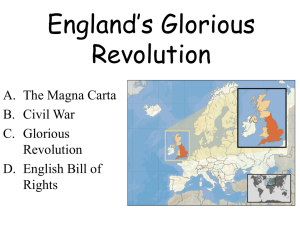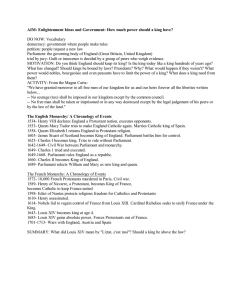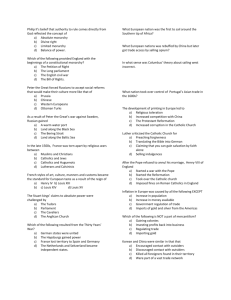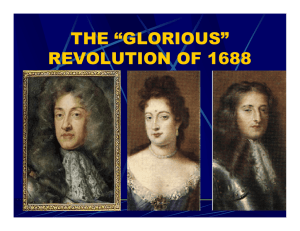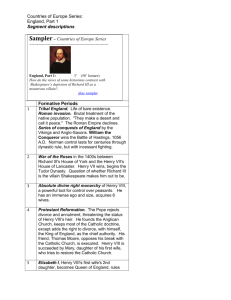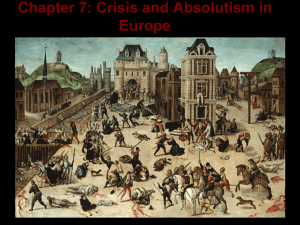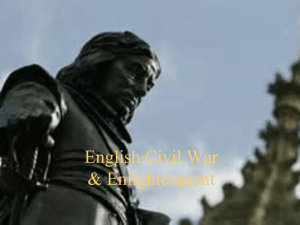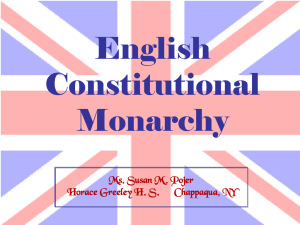Charles II
advertisement
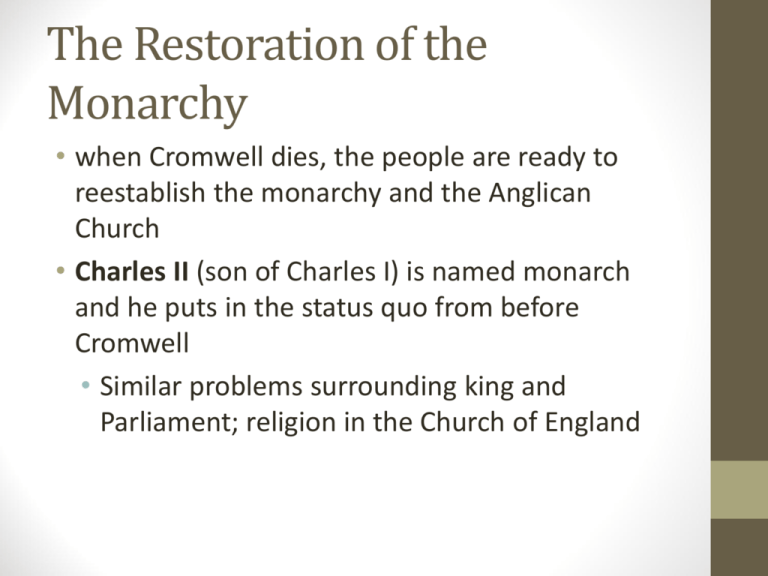
The Restoration of the Monarchy • when Cromwell dies, the people are ready to reestablish the monarchy and the Anglican Church • Charles II (son of Charles I) is named monarch and he puts in the status quo from before Cromwell • Similar problems surrounding king and Parliament; religion in the Church of England Charles II • believed in religious toleration and planned to convert to Catholicism • in attempt to unite the people behind the war with Holland, issues Declaration of Indulgence suspending all laws against Catholics and non-Anglican Protestants • Parliament forces Charles to rescind Declaration of Indulgence and passes Test Act – requiring all civic and military officials to swear an oath against the doctrine of transubstantiation (Catholic communion) • Treaty of Dover makes peace with France and receives an allotment of money each year to introduce Catholicism • In response to a threat of assassination, Charles responds by executing Whig members for treason, converts to Catholicism on his death bed and leaves James II a Parliament filled with royal friends James II • James II – repeals the Test Act, puts Catholics in positions of power, and issues another Declaration of Indulgence permitting religious freedom • In 1688, James imprisoned seven Anglican bishops for refusing to read the Declaration of Indulgence to their pulpits • Whigs—mainly middle class and Puritan, favored Parliament and religious toleration • Tories—made up of nobles, gentry, and Anglicans supported the monarchy and wanted Anglicanism as the official religion • James II fathered a male heir in June 1688 who would be raised a Catholic • Moves to create a Catholic England result in the creation of unity amongst Protestant factions in England. The Glorious Revolution • Parliament afraid of a Catholic heir to the throne invite William III (stadtholder ) of Orange(Netherlands) to invade England • James II flees to France - William and Mary (James II eldest Protestant daughter) succeed to the throne in the bloodless Glorious Revolution Results of the Glorious Revolution • Bill of Rights (1689)forbade the use royal rights without Parliament consentlaws, armies, Protestant faith, no Catholic heir • England becomes a limited monarchy and permits worship of all Protestants, but not Catholics (The Toleration Act of 1689) • Act of Settlement puts King George I on the throne. George I, Elector of Hanover, a Protestant Prince and distant relation to the Stuarts
